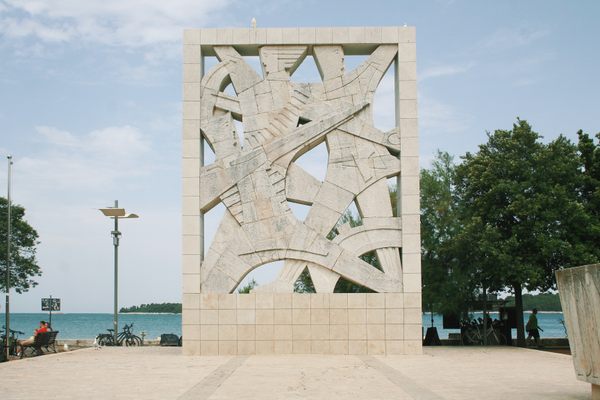During the Second World War, Croatia, a former part of Yugoslavia, battled German and Italian fascists. On the 6th of April 1941, Axis forces invaded Yugoslavia, and sadly, Croatia became a puppet state. Despite these major setbacks to the country’s freedom, Istria made itself a large contributor to the victory against these anti-fascist militias. The region prides itself on its freedom-fighting spirit with various statues, memorials and sculptures.
From 1943 to 1945, there were roughly 29,000 Istrian fighters combating fascism. Croatia, proud of its people, unveiled a monument in 1956 to commemorate the resilient efforts of the partisans and victims of the war. The sculptor Ivan Savolic was born in Croatian and was a member of the sculptors who wanted to escape from socialist realism. These sculptors were mid-20th-century artists who favoured Croatian traditions. Some of Savolic’s works include the ‘Three Fists’ in Serbia’s Bubanj Memorial Park.
Alongside the monument, Rovinj has two statue busts of fellow freedom fighters Giuseppe Budicin and Matteo Benussi. There is limited knowledge about their lives, but Budicin was born in Rovinj. He organized resistance to the movement in 1943. Sadly, in 1944, the Axis forces captured and killed him, with his body and two others (Guerrino Grassi and Giovanni Sossi) displayed on the Valdibora River. Although details about Benussi’s life remain scarce, he was a worker and communist militant, also one of the first to join the resistance. Benussi specifically dedicated himself to acts of sabotage.
After the war, he humbly turned down political and honorary positions to work with volunteers in rebuilding railways, roads and factories. The Yugoslav government named him a ‘People’s Hero’, in 1953, two years after his death.

